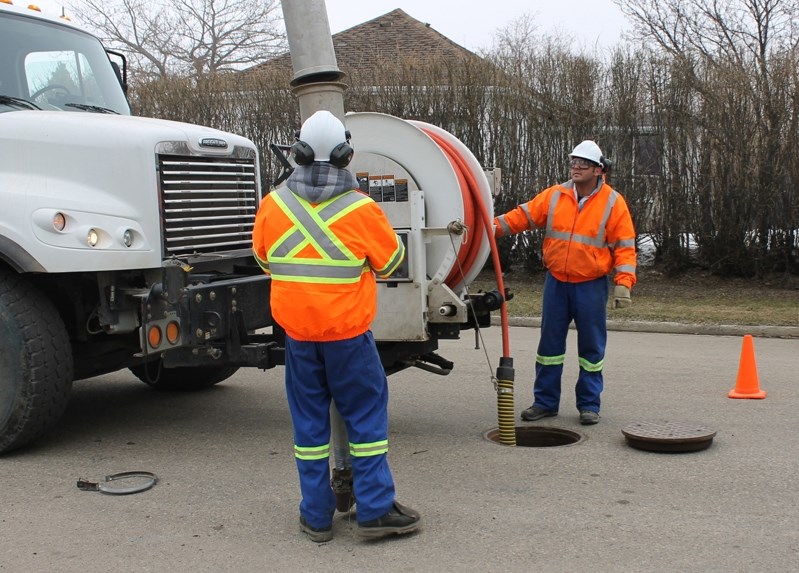Town council has approved the first comprehensive action plan to reduce unwanted water flowing into the sanitary sewer system and unnecessarily heading for treatment, an initiative that could ultimately save the municipality thousands of dollars every year.
At its regular April 14 meeting, town council approved administration's Inflow and Infiltration Reduction Strategy, which was identified as a council priority at its most recent strategic planning session.
Parts of the strategy have already begun with the $400,000 that has been earmarked for relining sanitary sewer lines. Six thousand metres have already been done with another 3,000 committed for refitting this year.
Craig Teal, the town's director of planning and operational services, said the current work and the approved strategy is important because unwanted groundwater entering weak spots in the sanitary sewer system, as well as water collected from roof drains and sump connections, takes up valuable capacity that could otherwise service growth and development. He added there is a cost to treat and dispose of every cubic metre of effluent that flows into the system.
“That cost per cubic metre is about $2.20 right now. It doesn't sound like much, but when you consider we generate on average 5,000 cubic metres of water a day that is going for treatment, and if we say up to 25 per cent of that is waste water, that is 1,250 cubes a day times $2.20 and that is 2,750,” said Teal. “It doesn't seem insurmountable but times that by 365.
“We need to address it. If it is as high as we think and we can bring it down as much as we can we are certainly financially motivated to do that,” said Teal, adding the goal is to reduce inflow and infiltration as much as possible before the town is fully connected to the regional sanitary sewer system. “That means we can keep the rates lower for the users of the system than they otherwise would be.”
The last time the town attempted an infiltration study was in 2004 but it was deemed inconclusive when the monitoring equipment failed to operate properly and the data collected was considered to be of little value.
The current strategy, which could take several years to fully implement, involves many activities, includes the relining of sanitary sewer pipes, a residential visitation program that will rolled be out in 2014 and continue into next year, and the monitoring of selected manholes to determine what the full conditions are like during dry periods -- when water levels have dropped, and when they are wet, such as in spring, with the arrival of rains and when groundwater levels have risen.
“If during the dry weather we had 100 litres per second passing our monitoring station and in the wet weather we find that we have 130 litres per second passing through, we are going to be assuming that extra 30 litres per second is a result of groundwater or rainwater getting in somewhere,” said Teal.” “The data will show how much rain and groundwater is getting into the system that shouldn't.”
Teal said there will be some cost for the strategy, over and above the $400,000 council has already committed for the refitting of the town's sanitary sewer lines. He said staff time from the utilities department will be dedicated to the strategy, and there will be some expenditures, which will be up for council's approval, for the purchase of equipment to measure water levels, and for any additional future rehabilitation work at manholes or older sanitary sewer lines.
Teal said he hopes to report to council this summer with the results from the monitoring. However, he added these results will just be part of an ongoing and lengthy process for the strategy
“It is not something we will be able to swoop and fix with one quick action,” said Teal.
In the meantime, the town is encouraging residents to assist with the approved strategy by checking drainage patterns around their houses to keep surface water and water from roof drains running away from buildings. Town officials added that disconnecting sump pumps from the sanitary sewer will be critical to reducing costs that are shared by all Innisfail residents.




